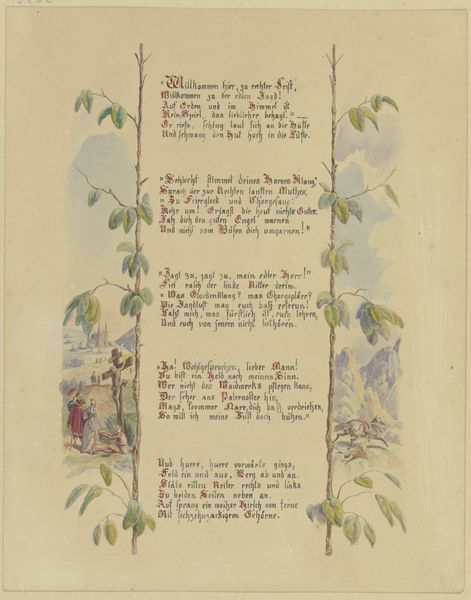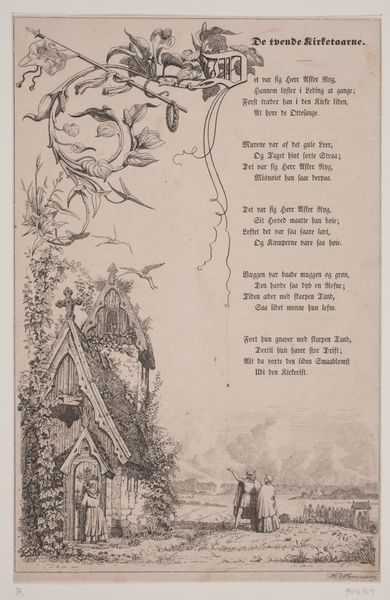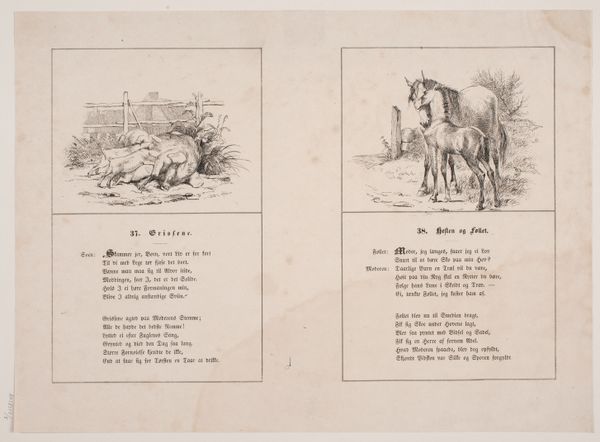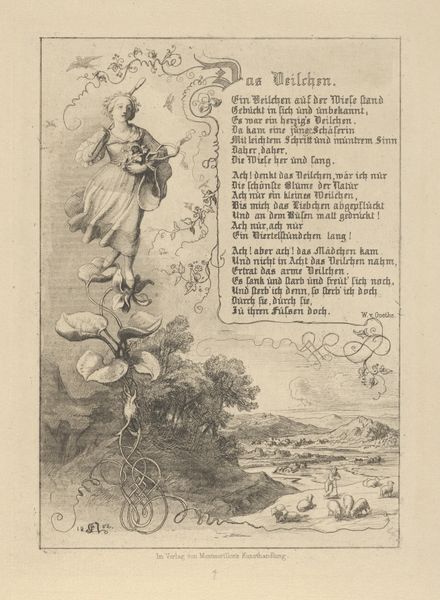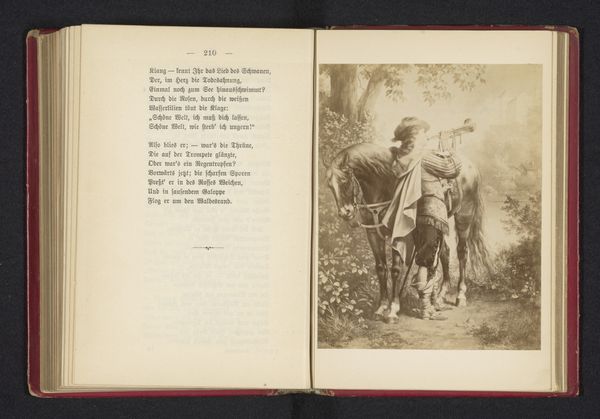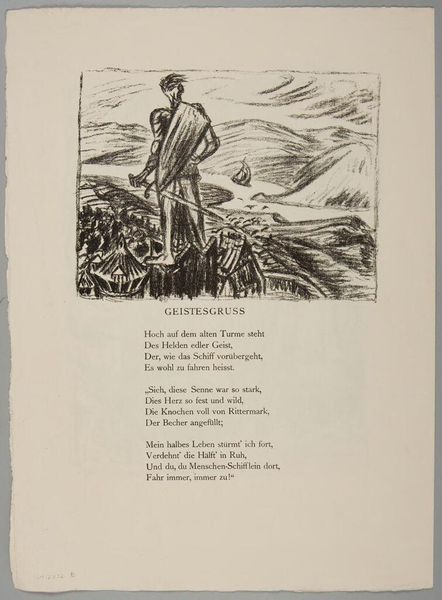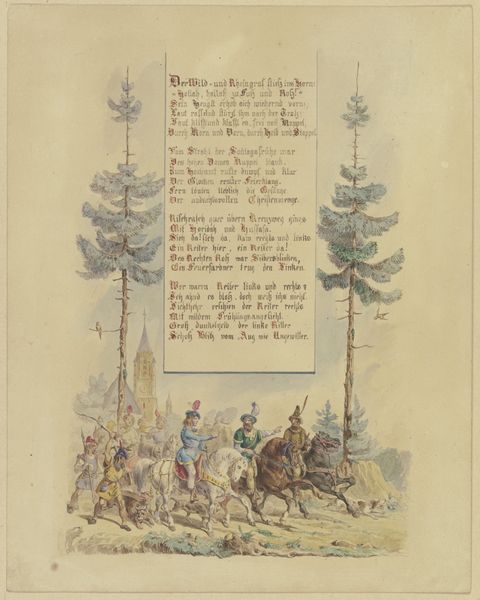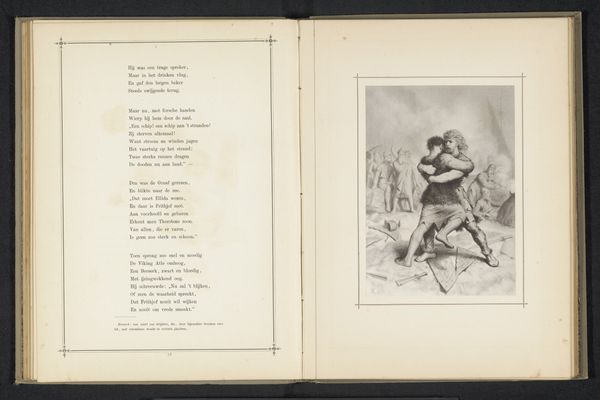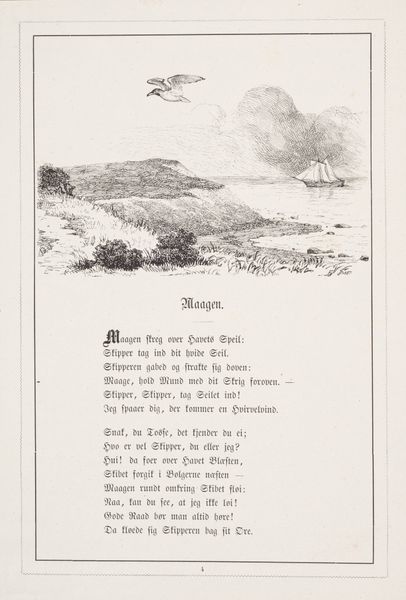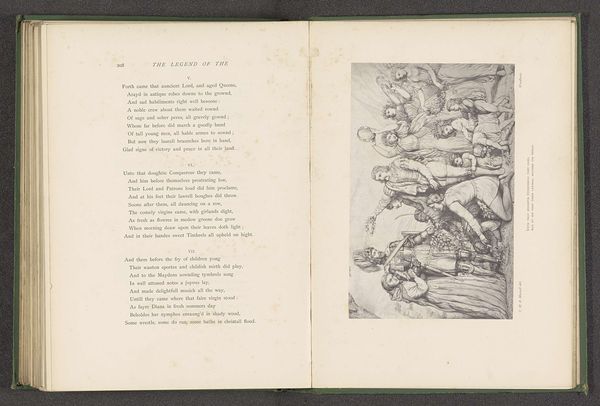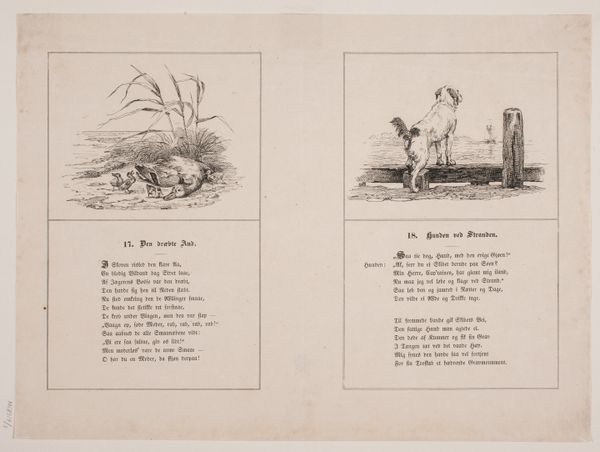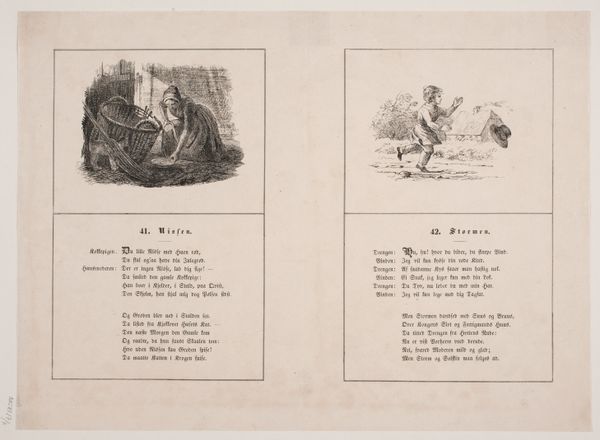
drawing, painting, paper, watercolor, ink
#
drawing
#
16_19th-century
#
narrative-art
#
painting
#
landscape
#
paper
#
personal sketchbook
#
watercolor
#
ink
#
coloured pencil
#
romanticism
#
watercolor
Copyright: Public Domain
Curator: This watercolour and ink drawing, "Der Rheingraf wendet sich gegen einen Bauern" by Eugen Klimsch, presents a fascinating lens through which to consider social dynamics and the materials used to depict them. What strikes you about the artwork? Editor: It feels like a chaotic scene, with a stark contrast between the colourful figures on horseback and what appears to be a much less colourful peasant on the ground. I am drawn to the texture created through the use of watercolour on paper. How does the materiality of the work inform its meaning? Curator: Exactly. Consider the materiality: watercolour and ink, humble materials traditionally associated with sketching or preliminary studies. Klimsch uses them to depict a scene of social conflict, a narrative of power. The rapid, gestural strokes, especially in the rendering of the horses and figures, suggest a dynamic process, a fleeting moment captured with immediacy. The choice of paper as a ground also speaks to accessibility and perhaps even disposability, juxtaposing the potentially ephemeral nature of the material with the weighty theme of class struggle. Editor: So, the seemingly light materials actually highlight the transient but constant state of social struggles. Does this contrast suggest any tension between the artist and the scene they’re depicting? Curator: Precisely. Klimsch’s process challenges the conventional boundaries between high art and what might have been considered mere illustration at the time. By elevating these materials, we are drawn to consider the power dynamics in artistic creation mirroring the Rheingraf’s exercise of dominance. And it may raise questions around how such themes of power were commodified through the sale of drawings and paintings like this. Editor: That's a completely new perspective for me. The connection between material, method and social messaging makes it a powerful statement. Thank you. Curator: Indeed. By focusing on the process, materiality, and the historical context of production and consumption, we begin to unravel some of the intricate layers woven into Klimsch’s image.
Comments
No comments
Be the first to comment and join the conversation on the ultimate creative platform.
